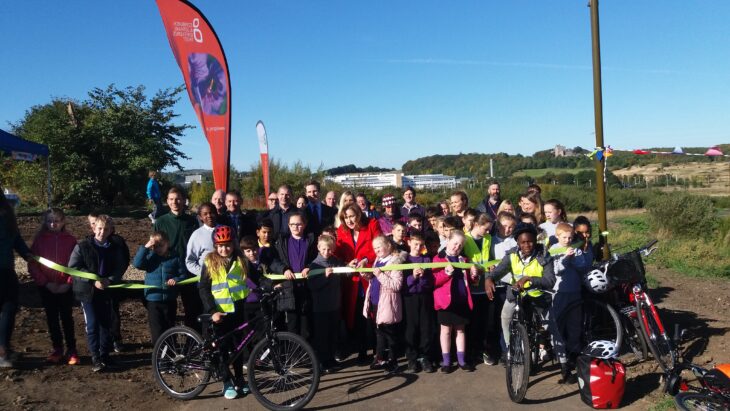Nature for equality: A just transition
Following on from the first What is a nature-based solution? article, this blog series will explore the benefits, uses and issues of nature-based solutions in Scotland and beyond as we look to tackle the climate and biodiversity crises in tandem.
Following the recent celebration of Indigenous Peoples Day on Monday 9 August, Nature-based Solutions Policy Adviser, Rebekah Strong, discusses the importance of including local communities in all stages of nature-based solutions projects.
Nature-based solutions may seem like an ideal way to help nature and society cope with a changing climate, but what about the people on the ground; the people whose land these solutions take up, whose doorsteps they are on? The IUCN definition and subsequent guidance on nature-based solutions makes it clear that local and indigenous people need to be included from the outset of any project. Unfortunately, this is not always the case.
There are valid concerns that the term nature-based solution is being used in some countries to push people out of the land and re-appropriate the space so that companies can offset their emissions and greenwash their actions. If this happens, this is not a nature-based solution. While regulations should reduce the risk of this in Scotland, we still need to be mindful and promote equality.

The implementation of nature-based solutions needs to support a just transition as we move to a sustainable, biodiversity and community positive, net-zero future. For this to happen, local people must be at the heart of decision-making. Nature-based solutions need to help solve problems faced by the local community, such as poor health and low air or water quality. Currently, there is often a disparity between the availability of good quality natural space and economic and social prosperity of a community. This is particularly apparent in urban areas.
As this example from Glasgow highlights, neighbourhoods that have a low resilience to overheating and flooding are also often areas of high deprivation. The existing areas of high-quality greenspace providing ecosystem services such as shade and water retention are more common in the more affluent neighbourhoods of the city. The impact of climate change in Glasgow will be disproportionately felt by those who typically contributed the least to climate change, and who are less able to adapt to the changes.
The impact of climate change in Glasgow will be disproportionately felt by those who typically contributed the least to climate change, and who are less able to adapt to the changes.
Implementing nature-based solutions in areas most in need would go a long way to improving quality of life and resilience to climate change across Glasgow and support a just transition. However, we must be aware that poorly planned nature-based solutions could have negative impacts for the local population.
We have to be careful that implementing nature-based solutions in an area of social deprivation does not result in gentrification. Nature-based solutions should not reinforce inequalities and further social exclusion of marginalised communities though increasing property prices. A study in New York City showed a strong gentrification effect resulting from natural, medium-sized green space. This suggested that building a nature park would result in the local poor residents being priced out of their community. These possible side effects of nature-based solutions need to be avoided as much as possible.
Nature-based solutions should be implemented in a way that does not impact the provision of social housing and affordable communities, but improves them and other facilities for residents. Recommendations from New York demonstrate that local communities need to be included in every aspect of the project to ensure a sense of ownership, belonging and social cohesion is maintained and improved. Knowledge provided by those who live and work in the area is key to a successful project. They are aware of the local conditions and how areas are used by the community. Taking this information into account will improve the success of the project for climate, biodiversity and local people.

The ongoing fourth update of Scotland’s National Planning Framework offers a mechanism to ensure that planning policy tackles ecological and societal problems holistically. By embedding nature-based solutions in to the next planning framework through a nature network, projects can be implemented in way which considers the wider impact on local communities, both in the short and longer term. Regional Land Use Partnerships are the ideal route to implement this network on the ground, involving local communities across a landscape scale, considering the benefits and impacts from a wider point of view while also solving local problems.
Nature-based solutions offer many flexible ways in which to improve people’s quality of life as long as they are implemented in an inclusive, transparent way – and people are supported and feel welcome to make the most of the benefits provided.
Rebekah Strong, Nature Based Solutions Policy Adviser
Help protect Scotland’s wildlife
Our work to save Scotland’s wildlife is made possible thanks to the generosity of our members and supporters.
Join today from just £3 a month to help protect the species you love.
Preface
Following on from the first What is a nature-based solution? article, this blog series will explore the benefits, uses and issues of nature-based solutions in Scotland and beyond as we look …
